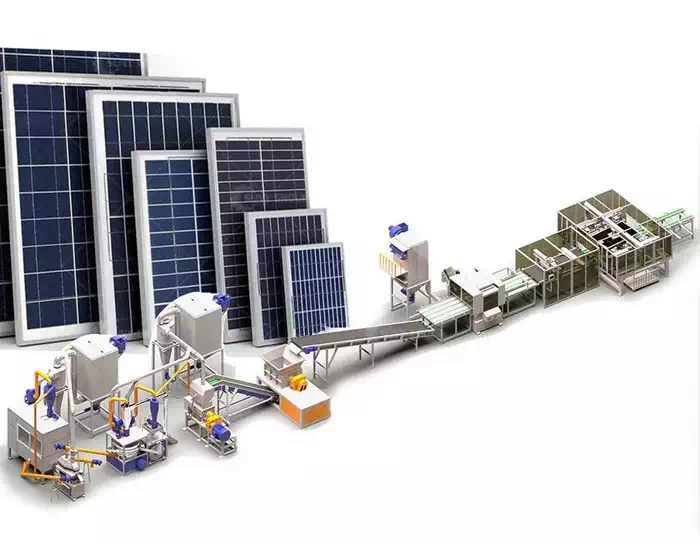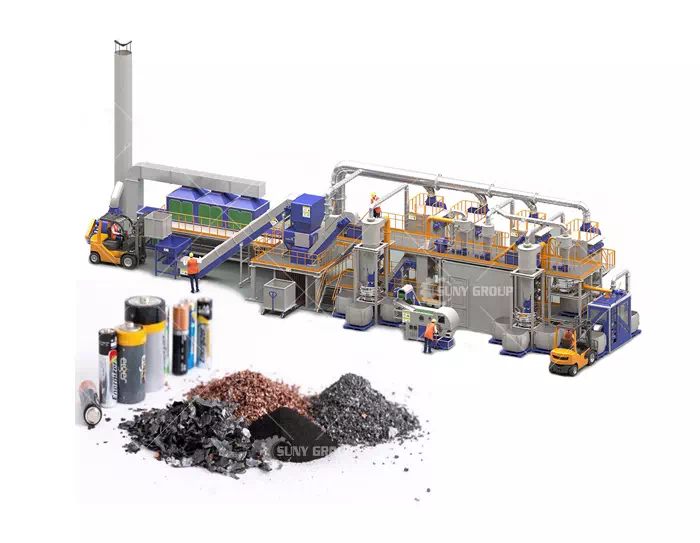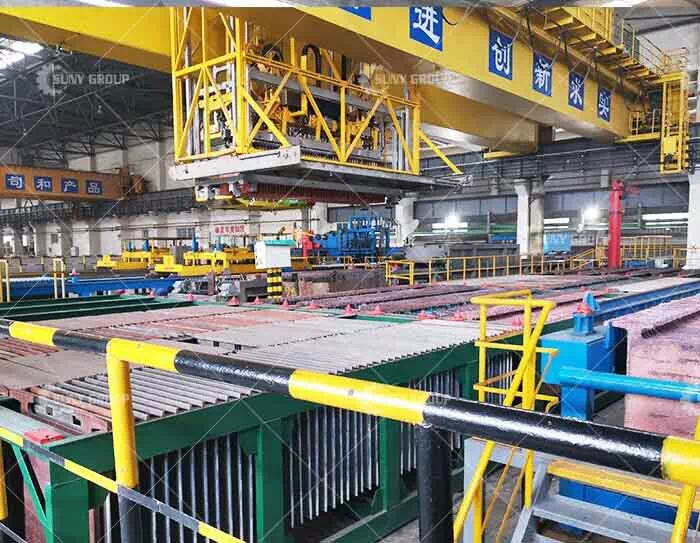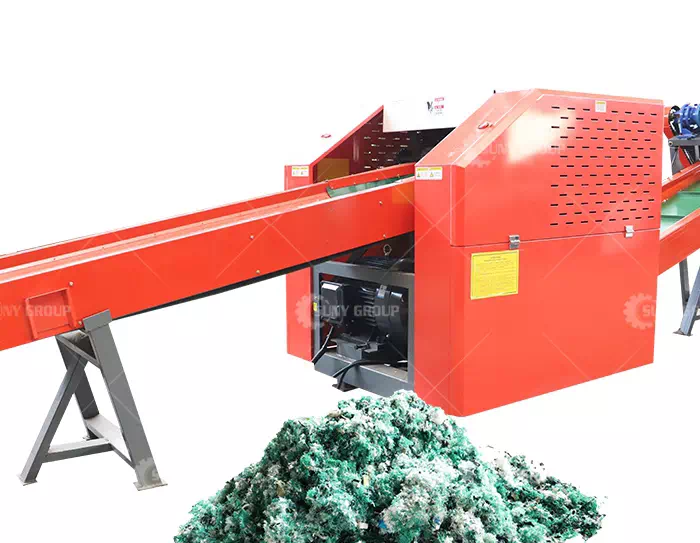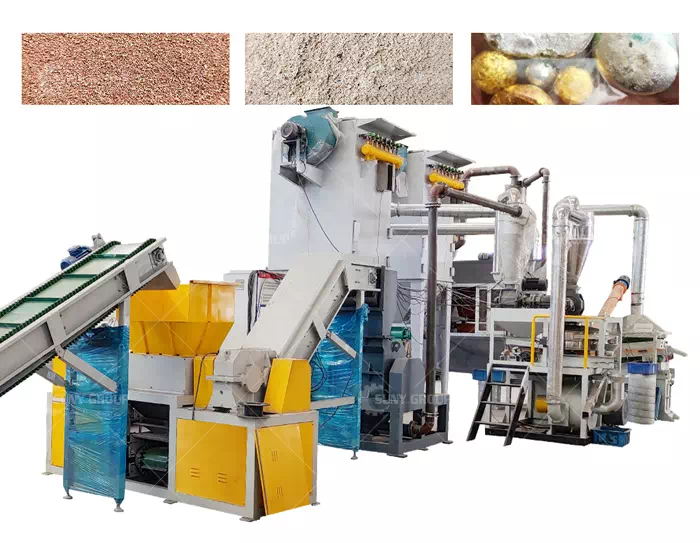Scrap mobile phone lithium ion battery recycling plant
Scrap mobile phone lithium battery recycling plant mainly adopts physical recycling methods, supplemented by "three waste" disposal measures, with green low-carbon, energy-saving and environmental protection, no secondary pollution and other characteristics, and take into account the economic and environmental benefits, not only to achieve the use of valuable components, but also to harmless treatment of harmful components. The entire recycling process is industrial automated, with high recycling efficiency and processing capacity of 500 kg per hour and an annual processing capacity of 5,000 tonnes, and the recycling rate of the valuable components of waste lithium batteries is over 90%.
The cobalt, lithium, copper and plastic in waste lithium batteries are all valuable resources with high recovery value. Therefore, the scientific and effective treatment and disposal of waste lithium batteries not only has significant environmental benefits, but also has good economic benefits. Lithium battery is mainly composed of shell, positive electrode, negative electrode, electrolyte and diaphragm.
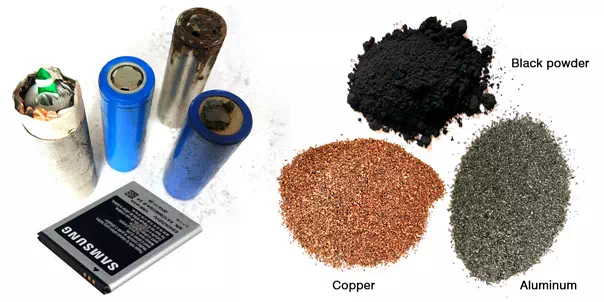
Mobile phone lithium battery equipment process:
The waste battery is sent to the shredder by the conveyor for shredding, and the shredded material is sent to the secondary multi-knife crusher through the conveyor for secondary crushing, and the material after secondary crushing is sent to the conveyor with magnetic separation equipment, which can sort out the iron in the material. The sorted positive and negative electrode pieces are fed into the three-stage crusher for fine crushing, which crushes the material to about 20 mesh. The crushed material is fed by the negative pressure system into the cyclone separator for dust filtration and stratification of different densities by two airflow sorting, then the positive and negative electrode materials with copper, aluminium and nickel are obtained, while all the ultra-fine dust is brought into the pulse dust collector by the negative pressure system for collection. And the filtered tail gas will continue to be sent by the negative pressure system to the tail gas treatment equipment for air purification to meet the national emission standards before being discharged at high altitude.
The cobalt, lithium, copper and plastic in used mobile phone lithium batteries are valuable resources and have a high recovery value. Therefore, the scientific and effective treatment and disposal of waste lithium batteries not only has significant environmental benefits, but also has good economic benefits. Lithium batteries are mainly composed of a shell, positive electrode, negative electrode, electrolyte and diaphragm. The positive electrode is composed of lithium cobaltate powder coated on both sides of the aluminum foil collector through PVDF, which plays a bonding role; the negative electrode structure is similar to the positive electrode, composed of carbon powder bonded on both sides of the copper foil collector. At present, the research on the resourceization of waste lithium batteries mainly focuses on the recovery of cobalt and lithium, which are valuable precious metals for the positive electrode, and the separation and recovery of negative electrode materials is rarely reported. In order to alleviate the increasingly serious problem of resource shortage and environmental pollution caused by rapid economic development, it has become a global consensus to achieve full-component recycling of waste materials. The copper in the cathode of waste lithium batteries (up to 35%) is a widely used raw material for production, and the carbon powder adhered to it can be used as an additive in plastics and rubber. Therefore, the effective separation of the constituent materials of waste lithium battery cathodes is essential to maximise the resourcefulness of waste lithium batteries and to eliminate their corresponding environmental impact. The working principle is to crush the raw material to below 10mm with a crusher, then into the particle crusher for stripping and crushing, and then into the micro powder classifier for separation and treatment, with the tailing ash collected by the back channel cyclone separator and pulse dust collector.
Recommend products
CONTACT US:
If you have any requirement or suggestion, please fill in the form and send to us, thanks!E-mail:sunymachine@gmail.com | Whatsapp:+8613674945231


